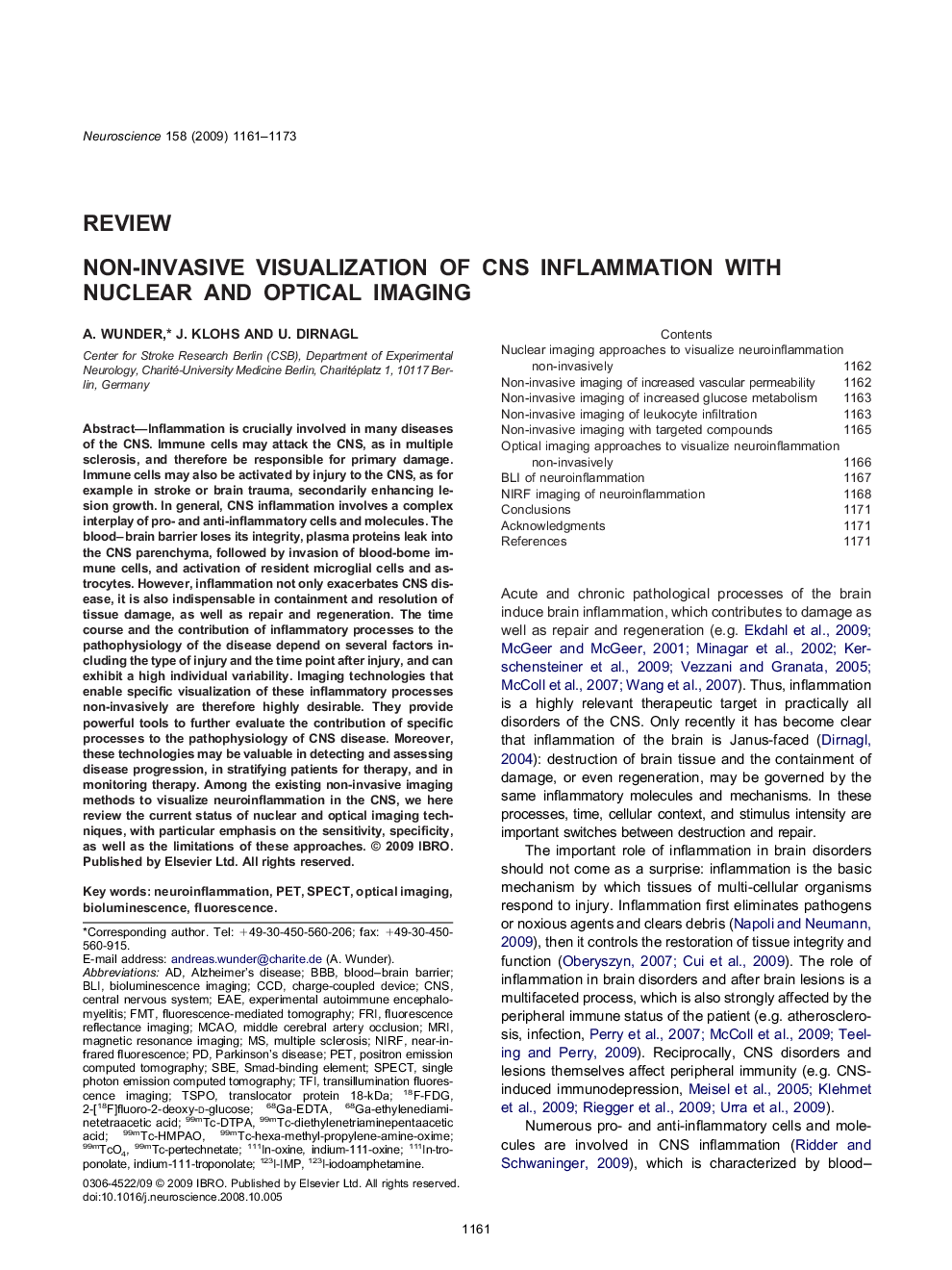| Article ID | Journal | Published Year | Pages | File Type |
|---|---|---|---|---|
| 4340203 | Neuroscience | 2009 | 13 Pages |
Abstract
Inflammation is crucially involved in many diseases of the CNS. Immune cells may attack the CNS, as in multiple sclerosis, and therefore be responsible for primary damage. Immune cells may also be activated by injury to the CNS, as for example in stroke or brain trauma, secondarily enhancing lesion growth. In general, CNS inflammation involves a complex interplay of pro- and anti-inflammatory cells and molecules. The blood-brain barrier loses its integrity, plasma proteins leak into the CNS parenchyma, followed by invasion of blood-borne immune cells, and activation of resident microglial cells and astrocytes. However, inflammation not only exacerbates CNS disease, it is also indispensable in containment and resolution of tissue damage, as well as repair and regeneration. The time course and the contribution of inflammatory processes to the pathophysiology of the disease depend on several factors including the type of injury and the time point after injury, and can exhibit a high individual variability. Imaging technologies that enable specific visualization of these inflammatory processes non-invasively are therefore highly desirable. They provide powerful tools to further evaluate the contribution of specific processes to the pathophysiology of CNS disease. Moreover, these technologies may be valuable in detecting and assessing disease progression, in stratifying patients for therapy, and in monitoring therapy. Among the existing non-invasive imaging methods to visualize neuroinflammation in the CNS, we here review the current status of nuclear and optical imaging techniques, with particular emphasis on the sensitivity, specificity, as well as the limitations of these approaches.
Keywords
111In-oxineTSPOMCAOEAENIRFTFISBEFMT18F-FDGFRI99mTc-HMPAO99mTc-DTPAfluorescence reflectance imaging123I-IMPCCD99mTc-pertechnetate2-[18F]fluoro-2-deoxy-d-glucoseexperimental autoimmune encephalomyelitisNeuroinflammationMRImiddle cerebral artery occlusionSPECTAlzheimer's diseaseParkinson's diseaseBioluminescencebioluminescence imagingMagnetic resonance imagingOptical imagingsingle photon emission computed tomographyPositron emission computed tomographyBLICNSCharge-Coupled DeviceBlood–brain barrierBBBcentral nervous systemSmad-binding elementNear-infrared fluorescenceFluorescenceMultiple sclerosisPET
Related Topics
Life Sciences
Neuroscience
Neuroscience (General)
Authors
A. Wunder, J. Klohs, U. Dirnagl,
